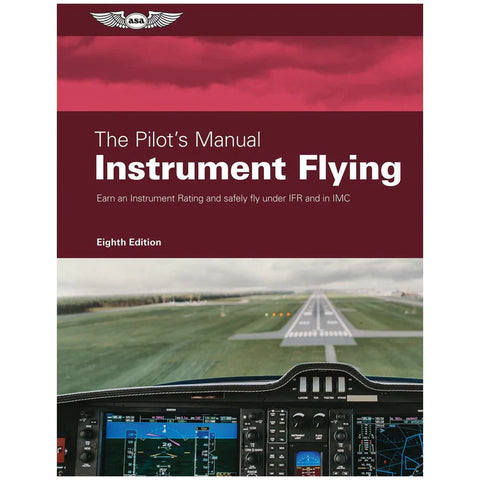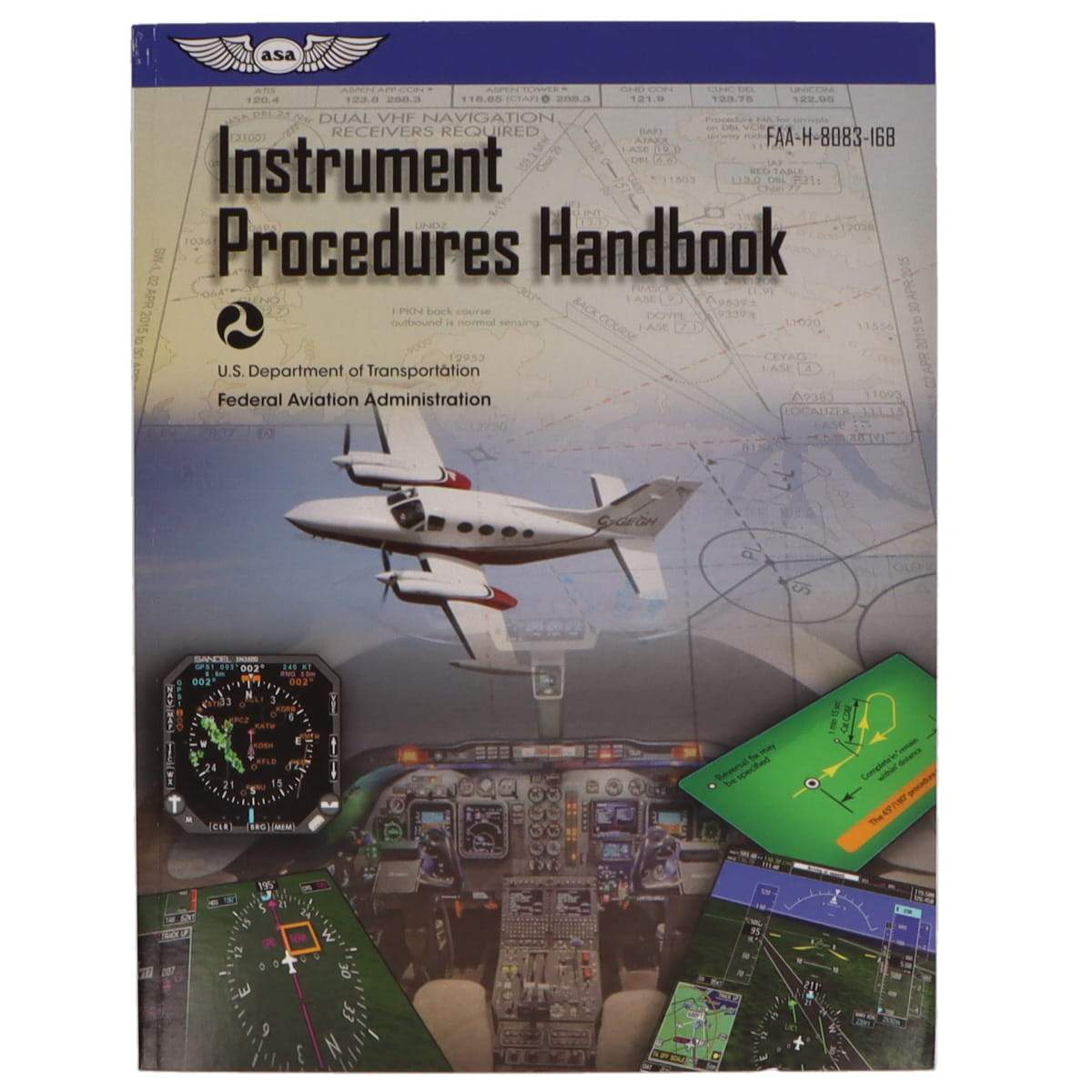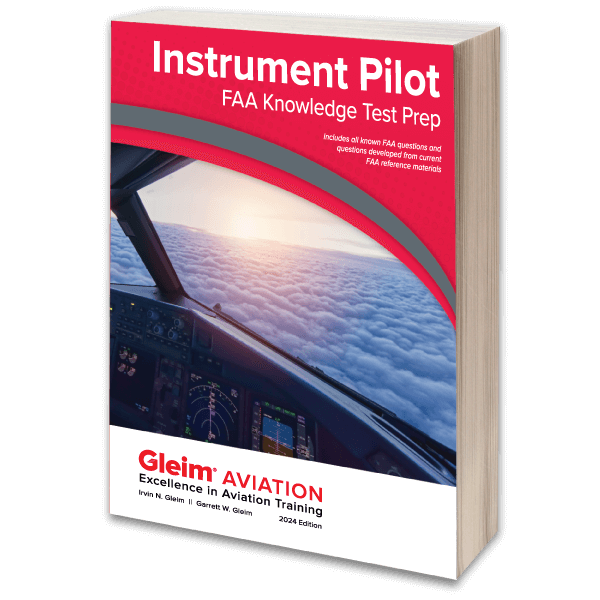If you've ever been curious about the aviation terms used at flight school, the influence of the Federal Aviation Administration (FAA), and the intriguing dance between VFR and IFR, you've found the right guide.
Think of VFR as your ticket to the skies on those picture-perfect, clear days, but if you want to become an IFR pilot, you're diving into the world of controlled airspace and navigating the unpredictable nuances of weather conditions.
Get out your notebook and let's cover the VFR vs. IFR debate together.
Let's get started with the basics!
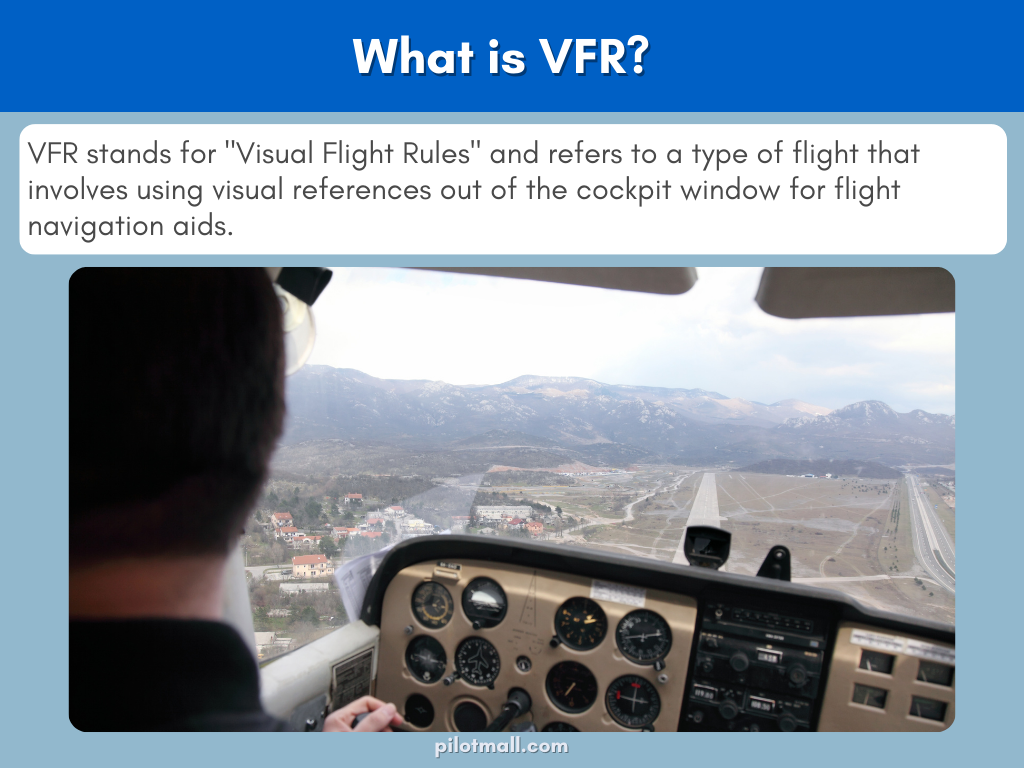
What is VFR?
VFR stands for "Visual Flight Rules" and refers to a type of flight that involves using visual references out of the cockpit window for flight navigation aids. VFR flying does not eliminate the need for instruments, seeing as they're required for heading, airspeed, and altitude readings. It also enables VFR pilots to visually see the runway while in the airport traffic pattern.
Visual Flight Rules (VFR) pilots, must remain vigilant against the possibility of airborne collisions. They have a personal responsibility to scan the skies frequently when traversing busy airspace, and to be ever mindful of other air traffic.
Student pilots starting out with their flight training will be taught how to fly under visual rules in order to work on obtaining their private pilot's license.
The Pros of Flying VFR
Flying VFR, or "Visual Flight Rules," offers an incredible sense of freedom and adventure that many pilots have come to cherish. Here are a few of the pros to consider:
-
The View: With VFR, you get to soak in the amazing landscapes below and appreciate the warmth of the sunlight on your face.
-
Easier Training: There's a genuine connection to the world around you as you navigate by visual reference points, not to mention, that it is easier to train students how to perform safe VFR flight.
-
Enjoyable Flight: VFR involves a more pleasant experience, perfect for enjoying the beauty of flight without the constraints of complex instrument procedures. The reason why most new private pilots want to fly VFR comes from the simplicity and the ability to savor the sheer pleasure of the flight.
-
Freedom to fly: As long as you are not flying near or around busy airspace or a busy airport, you can take off and fly without required contact with ATC (depending on the airspace).
The Disadvantages of Flying VFR
There are disadvantages that a pilot operating under visual flight rules will need to be prepared for.
-
Lack of Flexibility: One of the big setbacks with VFR flying is the lack of flexibility, often meaning more time spent on the ground waiting for the perfect weather conditions.
-
Weather Changes to IMC Unexpectedly: VFR pilot restrictions are placed on the ability to maintain visual flight. If the weather conditions shift to IMC(Instrument Meteorological Conditions), such as operating in clouds or low visibility, then the pilot would need to be in an IFR aircraft and be an IFR pilot.
-
Look out for other aircraft: if you are not on flight-following with ATC, then it becomes a pilots sole responsibility to monitor for traffic avoidance.
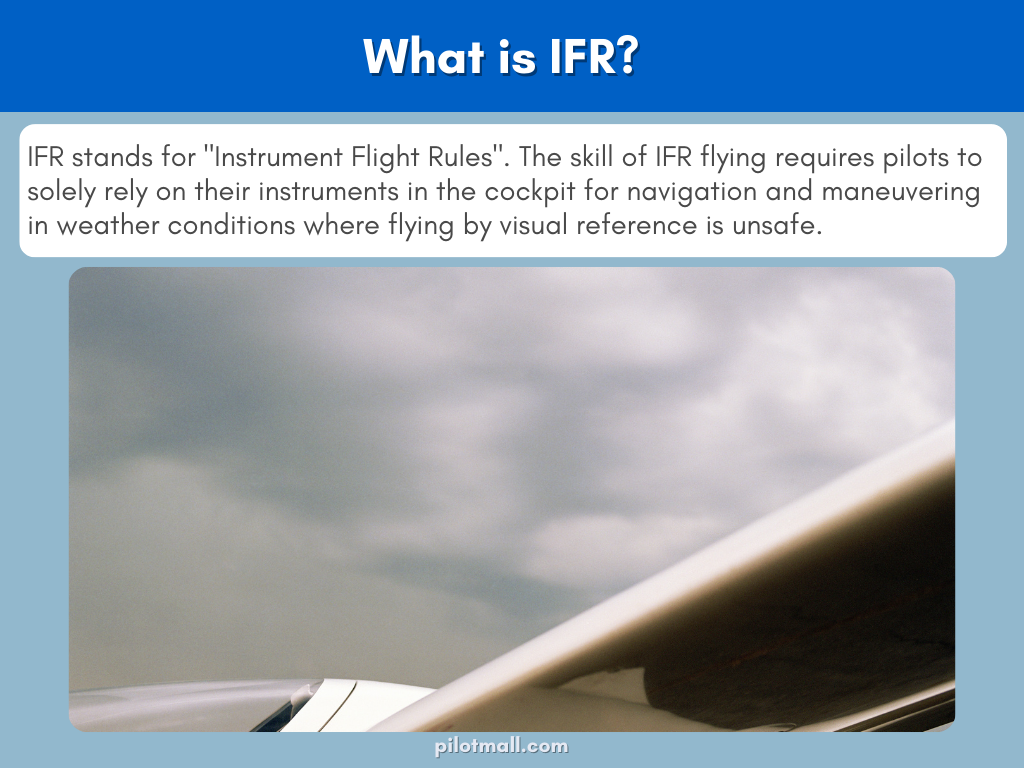
What is IFR?
IFR stands for Instrument Flight Rules and is an aviation term that represents a mode of flying where pilots rely exclusively on their onboard instruments for navigation and maneuvering. When you embark on an IFR flight, meticulous rules and regulations established by the FAA govern your journey.
These guidelines exist to safeguard all IFR pilots and their passengers as they navigate through cloud cover and high-altitude haze, where visual cues are unreliable.
It's an organized system between the pilot and air traffic control, with IFR clearance and a thoughtfully prepared IFR flight plan ensuring a safe and controlled passage through the skies.
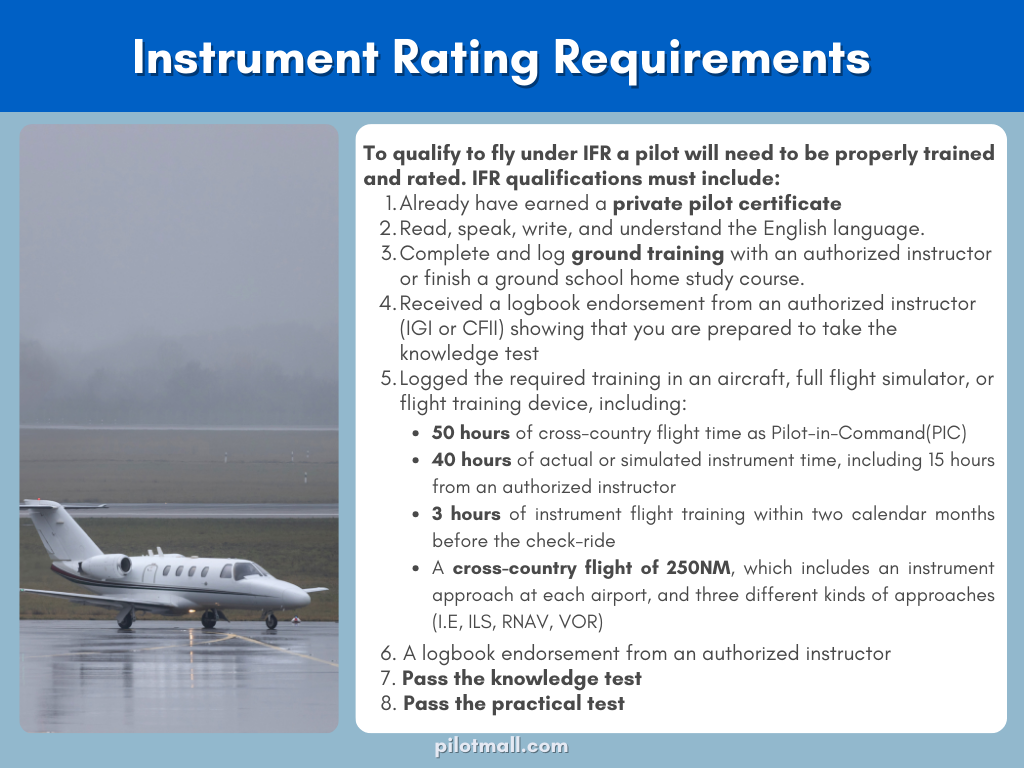
Required IFR Training
To qualify to fly under IFR a pilot will need to be properly trained and rated. IFR qualifications must include:
-
Already have earned a private pilot certificate
-
Read, speak, write, and understand the English language.
-
Complete and log ground training with an authorized instructor or finish a ground school home study course.
-
Received a logbook endorsement from an authorized instructor (IGI or CFII) showing that you are prepared to take the knowledge test
-
Logged the required training in an aircraft, full flight simulator, or flight training device, including:
-
50 hours of cross-country flight time as Pilot-in-Command(PIC)
-
40 hours of actual or simulated instrument time, including 15 hours from an authorized instructor
-
3 hours of instrument training within two calendar months before the check ride
-
A cross country flight of 250 NM, that includes an instrument approach at each airport, and three different kinds of approaches (I.E, ILS, RNAV, VOR)
-
A logbook endorsement from an authorized instructor certifying that you are ready to take the required practical test
-
Pass the knowledge test
-
Pass the practical test
The Pros of Flying IFR
Having an Instrument Flight Rules (IFR) rating opens up many of possibilities for a pilot. When flying IFR, pilots equipped with an instrument rating can navigate with certainty through a variety of weather conditions that might otherwise ground VFR flights.
With the ability to cut through fog, rain, or low visibility, IFR conditions offer a sense of security and enable flights to stick to their predetermined flight route. Pilots in IFR flight communicate closely with air traffic controllers, creating a collaboration that ensures safe navigation and IFR traffic avoidance.
The instrument flight rules provide a structured framework for handling diverse weather scenarios, making it an invaluable skill set for pilots seeking to enhance their capabilities and broaden their horizons in aviation.
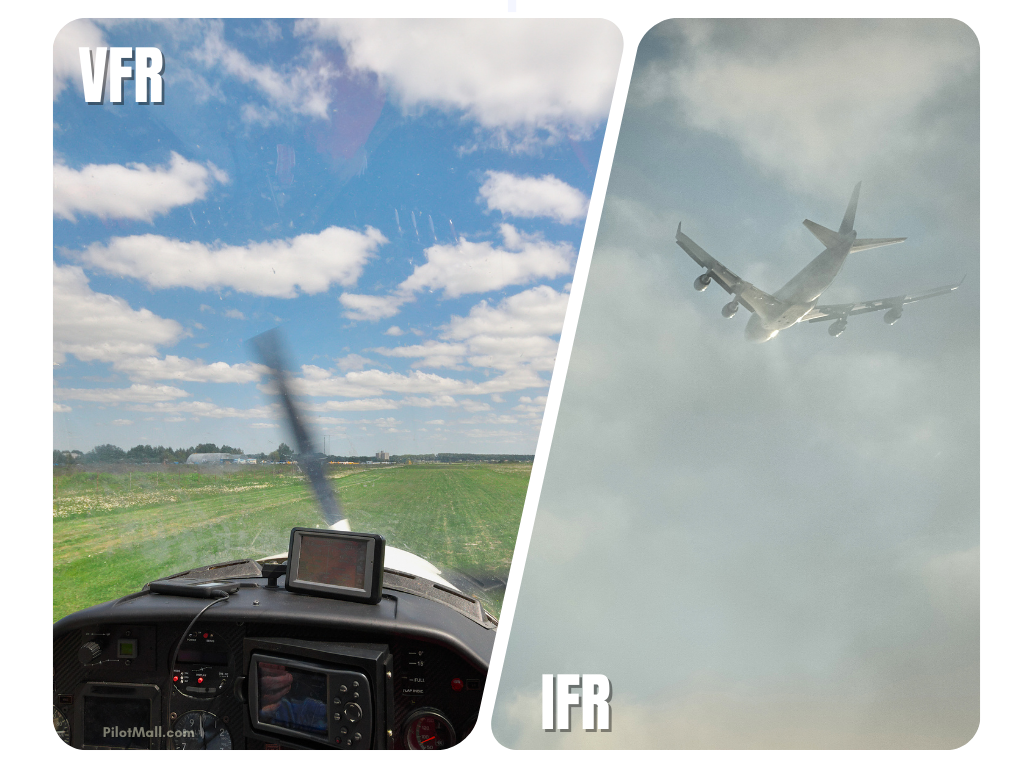
Which is Better, IFR or VFR?
There has been a long debate on wether VFR or IFR is better, but this often comes down to your flight goals and personal preferences. Both VFR and IFR have their unique attitudes, visual flight rules allows for sunny, scenic flight where the VFR pilot and the passengers can enjoy the beauty of what they can see below and around them. On the other hand, IFR, or instrument flight rules, equips the pilot with the tools to overcome challenging weather conditions and to fly more efficiently.
Many pilots opt to blend in both, using VFR when the skies are clear and file an IFR flight plan when Mother Nature tosses in a curveball. It's all about finding a balance that suits your flying needs.
VFR Minimums (Weather)
To fly under VFR, a pilot will have to adhere to the minimums and stay within visual meteorological conditions, otherwise they will need to file under IFR if they wish to take flight.
| ALTITUDE | AIRSPACE | VISIBILITY | CLOUD CLEARANCE |
| 10,000 MSL | E | 5 statute miles |
|
| Below 10,000 MSL |
C D E B |
3 statute miles |
(B) Clear of Clouds |
| 1,200 AGL or higher |
G (Night) G (Day) |
3 statute miles (Night) 1 statute mile (Day) |
|
| Below 1,200 AGL |
G (Night) G (Day) |
3 statute miles (Night) 1 statute mile (Day) |
(Day) Clear of Clouds |
The FAA has made available the §91.55 Basic VFR Minimums that you can review for further information.
Marginal VFR
Marginal VFR (MVFR), is a term used to describe conditions that are on the cusp of being suitable for VFR flight, but still fall short of ideal conditions. It implies that the visibility and cloud cover may not make flying a wise decision(especially if it does not meet VFR minimums in your surrounding flight area). Pilots operating in MVFR will need to be cautious, rely more on their instruments, and be prepared for changes in the weather.
The Challenges of IFR
IFR flying can be an unforgettable experience, but not without its challenges.
-
Fast Radio Communications: When you're going through controlled airspace and changing weather conditions, coordination with air traffic control is needed. Getting an IFR clearance means you're going to need to use CRAFT and keep an ear out for further guidance form your air traffic controller.
-
Lost to remember and manage: An IFR rating requires demanding training, there is a lot to remember and micro-manage, and instrument meteorological conditions can make it difficult for pilots new to the training process.
-
IFR Traffic: ATC will provide vectors to help you avoid traffic, it can be more important to keep a quiet cockpit so that you are able to quickly respond.
IFR pilots will tell you that despite the challenges, it is worth it. There's a great sense of accomplishment and safety with mastering the intricacies of IFR flight, and those moments when you successfully break through the clouds make it all worthwhile.
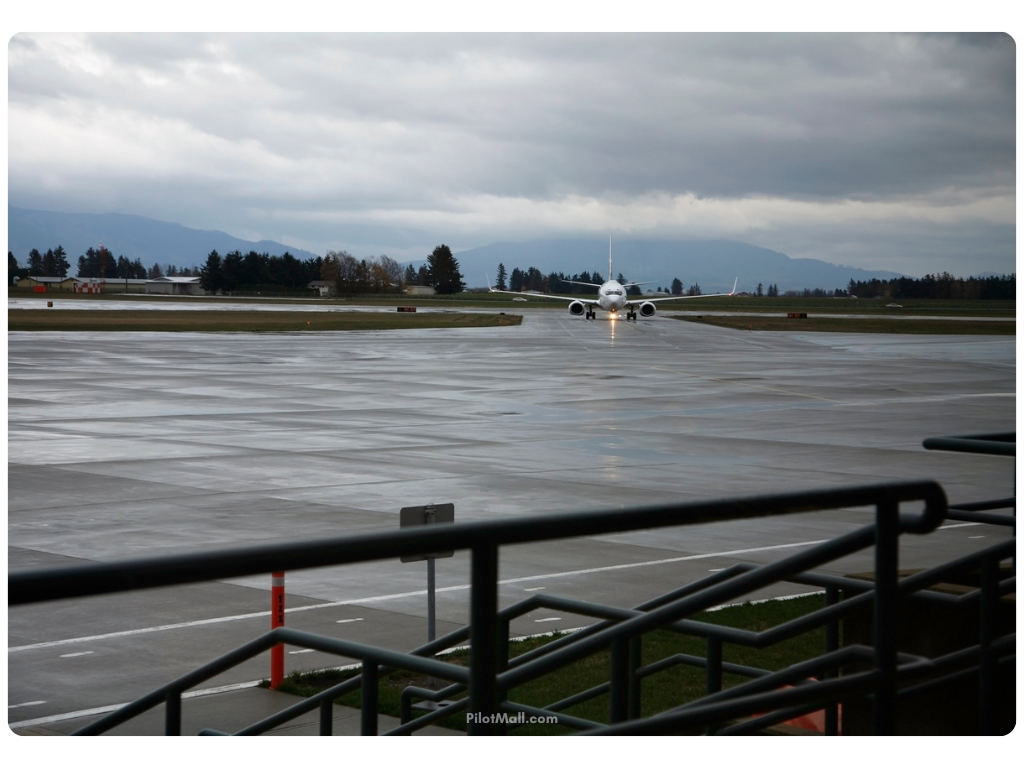 Why do Pilots Prefer IFR?
Why do Pilots Prefer IFR?
Pilots, whether they might be seasoned airlines professionals or private pilots, can find themselves needing to fly by IFR for several reasons. One major factor is the predictability and precision it offers.
When you can fly IFR, you're equipped with a filed plan that keeps you on a defined route through controlled airspace, reducing the chances of unexpected encounters with other aircraft.
You are also less reliant on needing ideal weather conditions, this makes IFR an attractive option when VFR flying might not be feasible.
The sense of safety and structures guidance that IFR provides is what many pilots appreciate.

Takeaway
Understanding the distinctions between IFR and VFR is definitely important. VFR flight allows you to enjoy all the advantages of flying visually, IFR equips you with structure and security in low visibility.
The choice between IFR and VFR depends on having the required equipment on your aircraft and the reasons behind your flight. Both have their place in aviation.
Remember, ultimately, flying is about the joy of the trip, along with maintaining safety and growing in your skills and knowledge.
Fly safe!
Want to know more about VFR and IFR flying?
For more aviation news, videos and guides:
-
Lost Comms on IFR Flight (What to do & Procedures to Follow)
-
IFR Clearance: How To Request & File (Examples / Requirements)
Did you find this article helpful?
Do you think we missed anything important? Let us know in the comments below!


